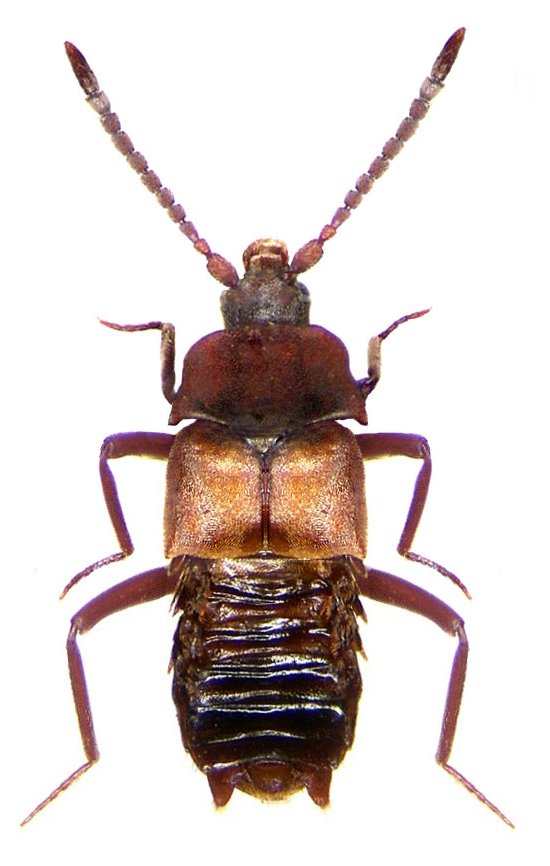|
Cordalia Permutata
''Cordalia'' is an extant genus of Aleocharinae, aleocharine rove beetle in the tribe Falagriini. It was discovered by Jacobs.James S. Ashe (1947-2005Tree of lifeUniversity of Kansas, Lawrence, Kansas, USA Species These three species belong to the genus ''Cordalia'': * ''Cordalia obscura'' (Gravenhorst, 1802) * ''Cordalia permutata'' Assing, 2002 * ''Cordalia taiwanensis'' Pace, 2008 g Data sources: i = ITIS, c = Catalogue of Life, g = GBIF, b = Bugguide.net References Monotypic Aleocharinae genera Beetles described in 1925 {{Staphylinidae-stub ... [...More Info...] [...Related Items...] OR: [Wikipedia] [Google] [Baidu] |
Aleocharinae
The Aleocharinae are one of the largest subfamilies of rove beetles, containing over 12,000 species. Previously subject to large-scale debate whether the subfamily deserved the familial status, it is now considered one of the largest subfamilies of rove beetles.James S. Ashe (1947–2005Tree of lifeUniversity of Kansas, Lawrence, Kansas, USA Description The Aleocharinae are generally small to minute beetles, as they can reach a maximum length of about , but usually they are long, with a few species of , among the smallest of beetles. The body is usually slender, often densely and finely punctured; the head is more or less round and the color may be light or dark brown, reddish-brown, or black, sometimes with contrasting colors of red, yellow, and black. Anatomy Because of the size of the subfamily, their anatomy is extremely variable. However, a few key features are shared by all rove beetles. All members have antennae with 10 or 11 segments. The antennal insertion is poster ... [...More Info...] [...Related Items...] OR: [Wikipedia] [Google] [Baidu] |
Rove Beetle
The rove beetles are a family (Staphylinidae) of beetles, primarily distinguished by their short elytra (wing covers) that typically leave more than half of their abdominal segments exposed. With roughly 63,000 species in thousands of genera, the group is currently recognized as the largest extant family of organisms. It is an ancient group, with fossilized rove beetles known from the Triassic, 200 million years ago, and possibly even earlier if the genus ''Leehermania'' proves to be a member of this family. They are an ecologically and morphologically diverse group of beetles, and commonly encountered in terrestrial ecosystems. One well-known species is the devil's coach-horse beetle. For some other species, see list of British rove beetles. Anatomy As might be expected for such a large family, considerable variation exists among the species. Sizes range from <1 to , with most in the 2–8 mm range, and the form is generally elongated, with some rove beetles being ovoid i ... [...More Info...] [...Related Items...] OR: [Wikipedia] [Google] [Baidu] |
Falagriini
Falagriini is a tribe of rove beetles in the family Staphylinidae. There are about 11 genera and at least 20 described species in Falagriini. Genera These 11 genera belong to the tribe Falagriini: * ''Aleodorus'' Say, 1830 * ''Borboropora'' Kraatz, 1862 * ''Bryobiota'' Casey, 1893 * ''Cordalia'' Jacobs, 1925 * ''Falagria'' Leach, 1819 * ''Falagrioma'' Casey, 1906 * ''Falagriota'' Casey, 1906 * ''Leptagria'' Casey, 1906 * ''Lissagria'' Casey, 1906 * ''Myrmecocephalus'' MacLeay, 1873 * ''Myrmecopora'' Saulcy, 1864 i c g Data sources: i = ITIS, c = Catalogue of Life, g = GBIF, b = Bugguide.net References Further reading * * * * * * * * * * * * * * * * * External links * Aleocharinae Articles created by Qbugbot {{staphylinidae-stub ... [...More Info...] [...Related Items...] OR: [Wikipedia] [Google] [Baidu] |
Cordalia Obscura
''Cordalia obscura'' is a species of rove beetle in the family Staphylinidae. It is found in Europe and Northern Asia (excluding China) and North America. References Further reading * External links * Aleocharinae Articles created by Qbugbot Beetles described in 1802 {{staphylinidae-stub ... [...More Info...] [...Related Items...] OR: [Wikipedia] [Google] [Baidu] |
Cordalia Permutata
''Cordalia'' is an extant genus of Aleocharinae, aleocharine rove beetle in the tribe Falagriini. It was discovered by Jacobs.James S. Ashe (1947-2005Tree of lifeUniversity of Kansas, Lawrence, Kansas, USA Species These three species belong to the genus ''Cordalia'': * ''Cordalia obscura'' (Gravenhorst, 1802) * ''Cordalia permutata'' Assing, 2002 * ''Cordalia taiwanensis'' Pace, 2008 g Data sources: i = ITIS, c = Catalogue of Life, g = GBIF, b = Bugguide.net References Monotypic Aleocharinae genera Beetles described in 1925 {{Staphylinidae-stub ... [...More Info...] [...Related Items...] OR: [Wikipedia] [Google] [Baidu] |
Cordalia Taiwanensis
''Cordalia'' is an extant genus of aleocharine rove beetle in the tribe Falagriini. It was discovered by Jacobs.James S. Ashe (1947-2005Tree of lifeUniversity of Kansas, Lawrence, Kansas, USA Species These three species belong to the genus ''Cordalia'': * ''Cordalia obscura'' (Gravenhorst, 1802) * ''Cordalia permutata'' Assing, 2002 * '' Cordalia taiwanensis'' Pace, 2008 g Data sources: i = ITIS, c = Catalogue of Life, g = GBIF, b = Bugguide.net References Monotypic Aleocharinae genera Beetles described in 1925 {{Staphylinidae-stub ... [...More Info...] [...Related Items...] OR: [Wikipedia] [Google] [Baidu] |
Monotypic Aleocharinae Genera
In biology, a monotypic taxon is a taxonomic group ( taxon) that contains only one immediately subordinate taxon. A monotypic species is one that does not include subspecies or smaller, infraspecific taxa. In the case of genera, the term "unispecific" or "monospecific" is sometimes preferred. In botanical nomenclature, a monotypic genus is a genus in the special case where a genus and a single species are simultaneously described. In contrast, an oligotypic taxon contains more than one but only a very few subordinate taxa. Examples Just as the term ''monotypic'' is used to describe a taxon including only one subdivision, the contained taxon can also be referred to as monotypic within the higher-level taxon, e.g. a genus monotypic within a family. Some examples of monotypic groups are: Plants * In the order Amborellales, there is only one family, Amborellaceae and there is only one genus, ''Amborella'', and in this genus there is only one species, namely ''Amborella trichopod ... [...More Info...] [...Related Items...] OR: [Wikipedia] [Google] [Baidu] |
